Qualcomm to Start XR2 Reference Design Programme for AR/VR/XR
by Dr. Ian Cutress on February 25, 2020 7:00 AM EST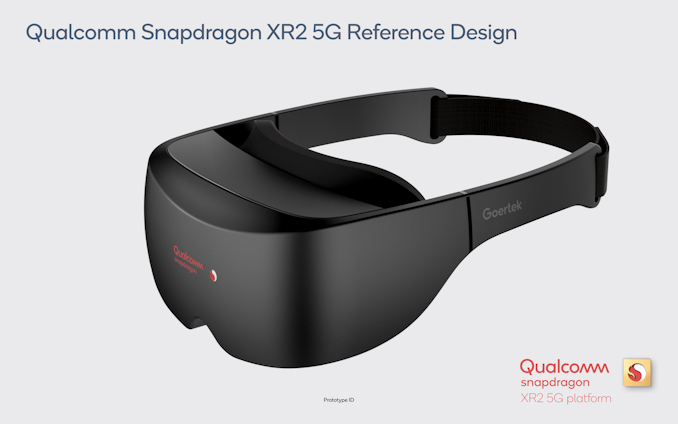
Today Qualcomm is announcing that it will be reintroducing its Reference Design Programme for its upcoming XR2 chip for AR/VR/XR headsets. The company stated that after the success of its XR1 equivalent programme, they would be initiating with potential customers earlier in the cycle this time around in a similar way to how they approach smartphone vendors with its new handset SoCs.
The plan is to offer a unit that provides dual 2K LCD panels, 5G and 60 GHz support, no cables, 7 cameras, and the full software stack. This includes a full rundown of product design and hardware schematics, bill-of-materials details, layout details, and the appropriate SDKs to enhance and develop new models.
Reference Designs are a common feature in many industries, such as smartphones and laptops – the SoC manufacturer will give its partners an ‘example’ device, usually targeted at a high-end customer, such that the customer can use it as a base for any product they want to design themselves. Some vendors choose to use the reference design almost completely, while others ignore it, but the idea is that vendors can either provide a system with a quick time to market or take a bit longer and offer differentiation or a design at a different price point. Qualcomm’s XR2 reference design will enable this for the latest generation of AR/VR/XR headsets.
Qualcomm’s previous XR1 platform was very successful, with over 30+ designs reaching market using the Snapdragon platform. The goal here for XR2 is to go beyond that, by offering peak functionality that includes up to 3K*3K per eye, 8K60 video decode, better object detection and occlusion algorithms, 3D audio, foveation with eye-tracking and variable rate shading.
Customers interested in Qualcomm’s XR2 Reference Design platform should get in contact with their local Qualcomm representative.


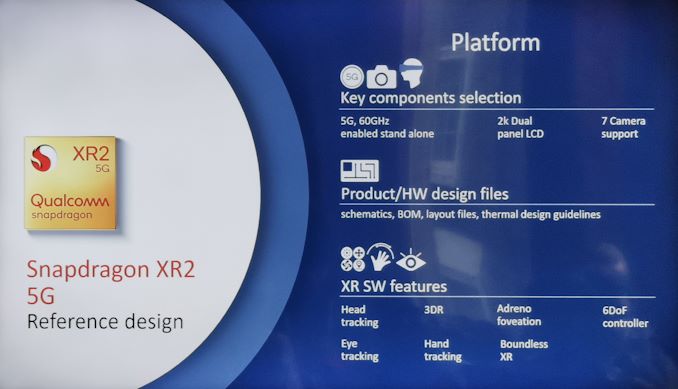
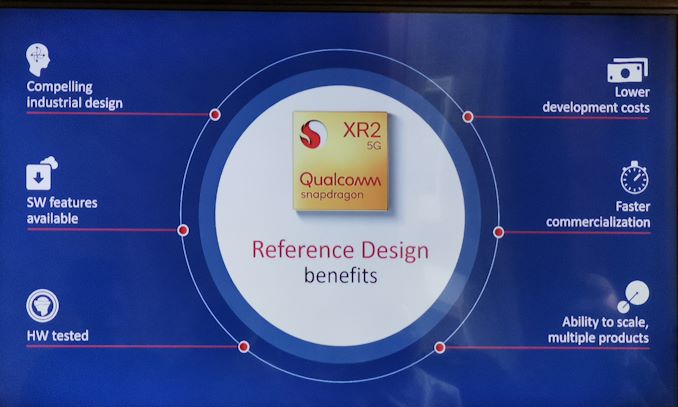
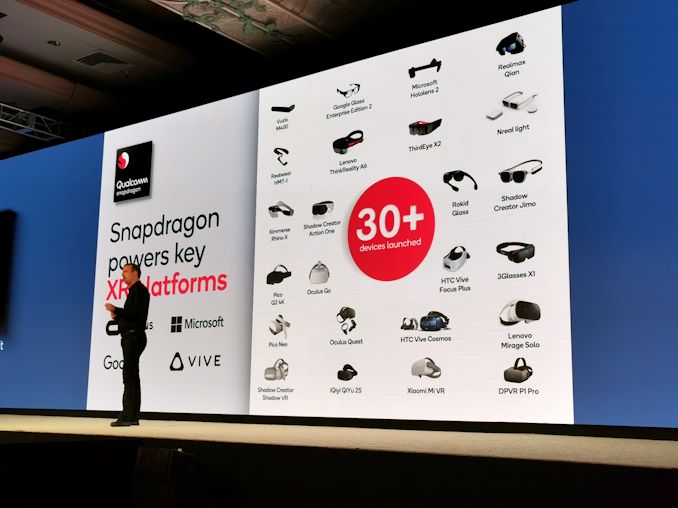
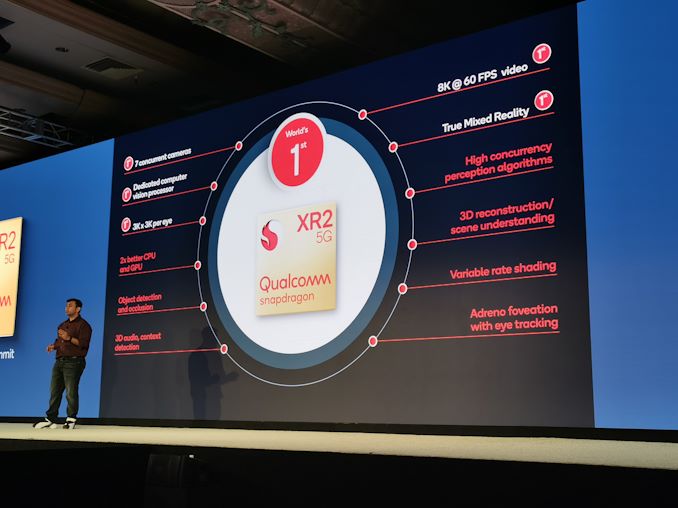








22 Comments
View All Comments
nandnandnand - Tuesday, February 18, 2020 - link
It needs to eventually hit 8K or 16K per eye at high framerates, which is not impossible for mobile chips if foveated rendering and other advancements are used. Pack it all in a monolithic 3D chip for a big boost in processing power.eva02langley - Tuesday, February 18, 2020 - link
Sorry to burst your bubble, but the maximum resolution of today consumer GPUs is 7680 x 4320 at 60Hz.Also, stacking dies for GPUs is not feasible unless you drop your power and frequency by at least half, which mean you would cut your performance at minimum by half of your silicon area. And if you stack 4+ dies together, you will drop the maximum performances per die even further due to heat which makes the whole concept totally non-viable financially. Basically, a double stack GPU would cost two time more and would barely provide 20-30% performance than a single die. Not to mention complexity in manufacturing such complex processors
edzieba - Tuesday, February 18, 2020 - link
"the maximum resolution of today consumer GPUs is 7680 x 4320 at 60Hz."For a single output link. For multiple composite links (e.g. DP MST) that can be easily exceeded, and for internal rendering (i.e. without the PHY limitation) it is VERY easily exceeded, limited only by raw ROP capacity.
nandnandnand - Tuesday, February 25, 2020 - link
Prepare to be shocked. Monolithic 3D chips are coming.yeeeeman - Wednesday, January 19, 2022 - link
it will take a looooong time to reach those resolutions. They will probably find other ways to make the image look sharper without increasing res.PeachNCream - Tuesday, February 18, 2020 - link
Based on the slow pace of product announcements and declining investment into R&D, it certainly looks like we are on the trailing end of our second VR fad. Maybe round three will finally bring us finely developed, useful products, but we still have not yet found broadly appealing use cases for teh technology yet so even if VR gets revived again in the future, it may still languish as a solution looking for a problem.edzieba - Tuesday, February 18, 2020 - link
HMD sales are continuing to ramp up rather than plateau.jordanclock - Tuesday, February 25, 2020 - link
Oh yeah, it definitely looks like VR is slowing.https://www.statista.com/statistics/671403/global-...
https://www.tomshardware.com/news/vr-ar-market-sal...
/s
PeachNCream - Tuesday, February 25, 2020 - link
Welcome to being seven days late to the party. In any event, you are presenting pull side data, not push side product launches and investment which is what I was talking about a week ago. If you look at historic data for new product launches, you will see that pull peaks always trail push peaks, but the curves are generally mirrors of one another.nandnandnand - Tuesday, February 25, 2020 - link
The article was nuked from AnandTech and completely inaccessible during those seven days.